Australia greenhouse emissions set new seven-year highs on natural gas boom – “Australia is on a collision course with climate catastrophe”
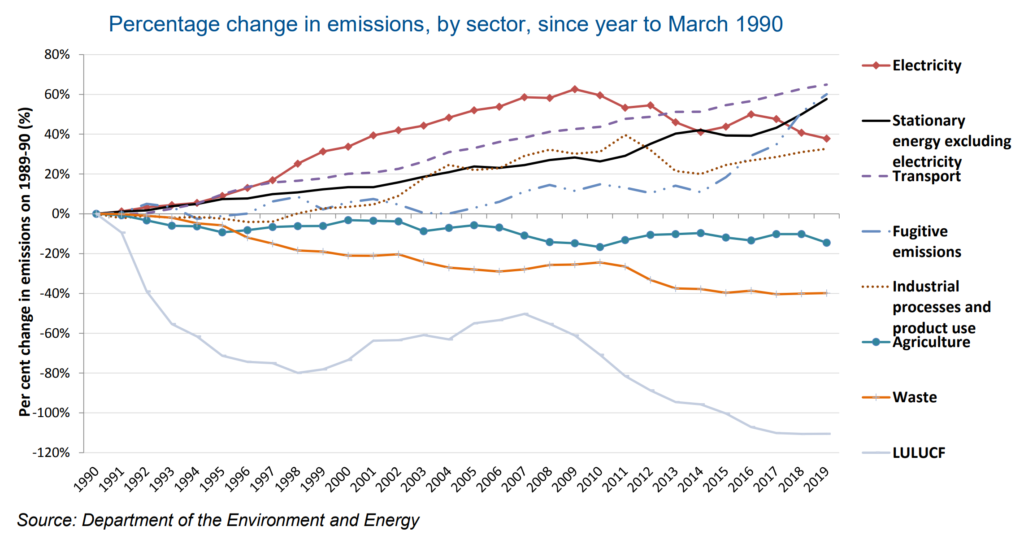
By Peter Hannam
30 August 2019
(The Sydney Morning Herald) – Australia’s greenhouse gas emissions have risen to the highest annual rate since the 2012-13 financial year, driven higher by surging gas production that has made the country the world’s biggest exporter of the fossil fuel.
Greenhouse gas figures [pdf] for the March quarter of 2019, released by the Morrison government on Friday, show emissions rose 0.6 per cent on the previous 12 months to 538.9 million tonnes of carbon dioxide-equivalent.
Emissions related to LNG exports jumped 18.8 per cent, eclipsing a drop from the electricity sector as renewable energy’s 28 per cent leap curbed coal- and gas-fired power output. Carbon pollution from electricity generation eased 2.1 per cent from a year earlier.
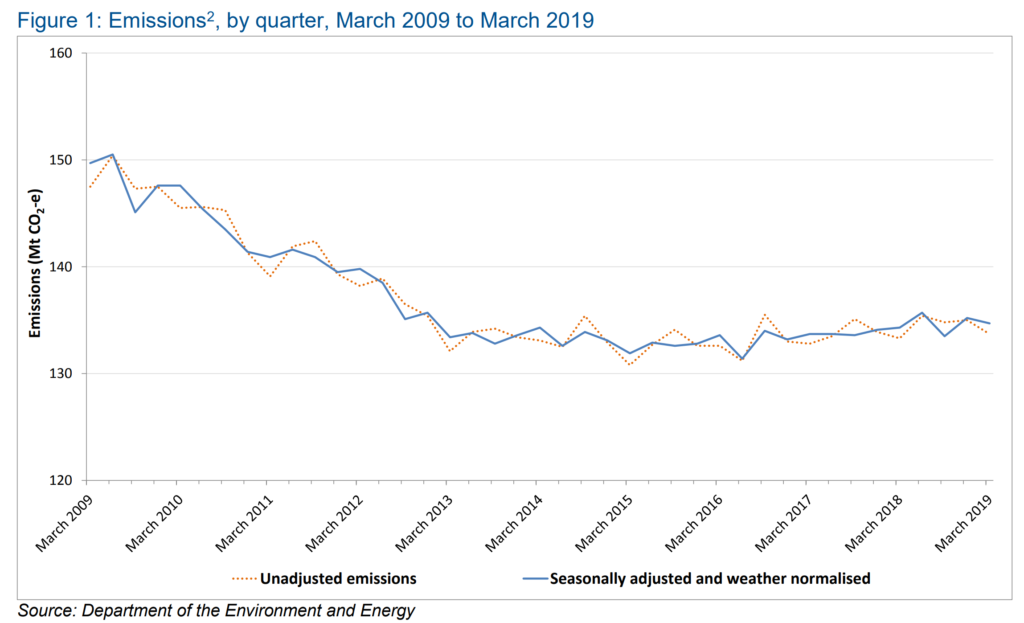
Transport also continued to grow as a source of greenhouse gases, rising 1.3 per cent as diesel use rose.
The government focused on a seasonal drop in emissions of 0.4 per cent compared with the final quarter of 2018.
It also sought to highlight that annual emissions remain 14 per cent below the peak recorded in the final year of the Howard government, and that on a per capita basis, emissions are about 40 per cent less than in 1990. […]
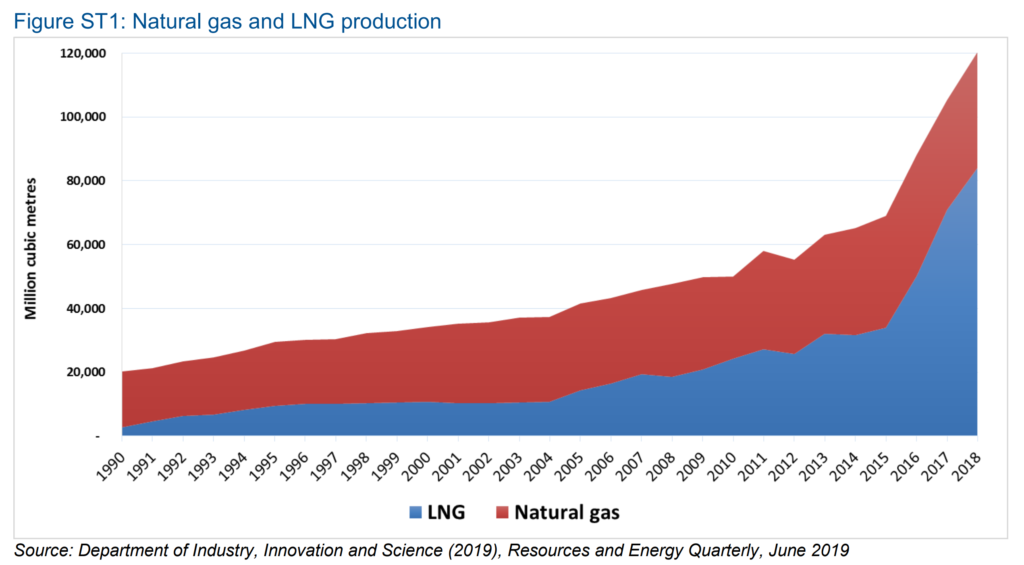
The latest data show the electricity sector used 23.1 per cent less gas in the year to March, while brown-coal consumption eased back 0.7 per cent.
Overall, though, gas use has been the main reason for the recent rise in annual greenhouse emissions. The liquified natural gas boom has propelled Australia past Qatar as the world’s biggest exporter in the December.
Emissions from the gas sector contribute to the overall total on several counts. Fugitive emissions, for instance, rose 5.9 per cent in the year to March 2019 to 59.6 million tonnes of CO2-e, with gas a major source.
Stationary energy use excluding the electricity sector – which takes in the processing of gas for export – also rose at an annual rate of more than 5 per cent for the year to March. This segment topped 103.8 million tonnes of CO2-e, trialling only the power sector emissions – at 178.5 million tonnes of CO2-e – among all emission sources.
Agriculture was the other main sector to report a drop in annual emissions, easing 4.8 per cent to 68.6 million tonnes of CO2-e.
Changes in land use, which includes deforestation, contributed less of a carbon sink in the past year but were still calculated as a 19.4 million tonnes of C02 reduction to the total.
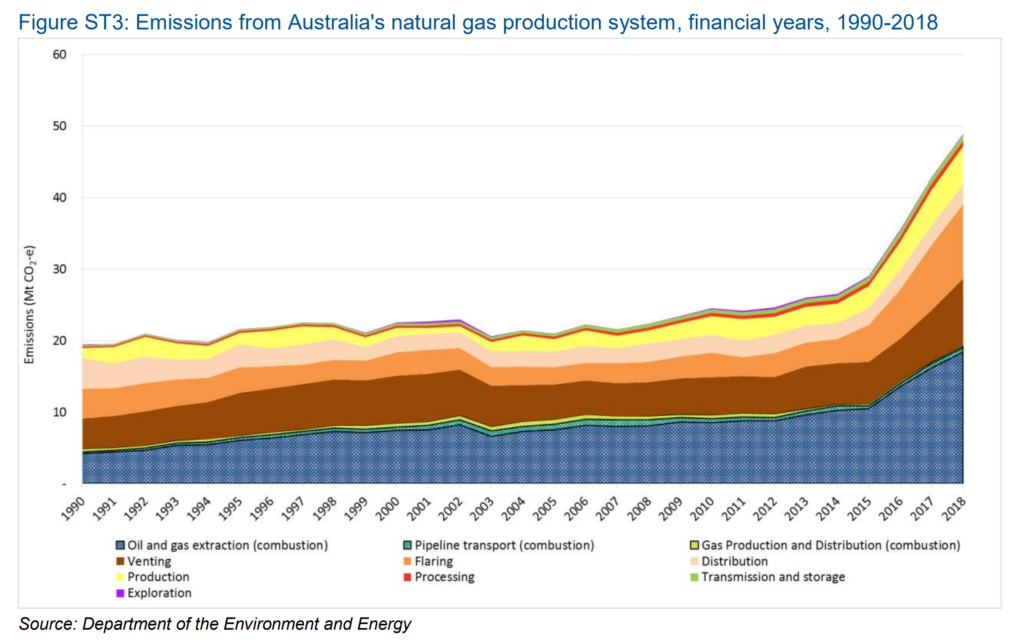
The Australia Institute and other non-government groups doubt the veracity of the land use figures, however, as they have largely failed to pick up a big increase in land clearing in Queensland in recent years and more lately in NSW. […]
Adam Bandt, the Greens’ climate spokesman said, the warming projections showed “Australia is on a collision course with climate catastrophe”.
“The only way to get our pollution under control, meet our international obligations under the Paris agreement and avoid a climate catastrophe is to urgently begin the phase out of coal and gas,” Mr Bandt said. [more]
Australia’s greenhouse emissions set new seven-year highs on gas boom

Australia on track to become one of the world’s major climate polluters
8 July 2019 (ACF) — If government and industry projections for fossil fuel expansions are realised, and if the rest of the world adopts policies consistent with the Paris Agreement, Australia could be responsible for up to 17 per cent of global emissions by 2030, according to new research. [pdf]
When emissions from Australia’s current coal, oil and gas exports (3.6 per cent of global total) are added to domestic emissions (1.4 per cent of global total), Australia’s contribution to the global climate pollution footprint is already about 5 per cent, the research by Berlin-based science and policy institute Climate Analytics finds.
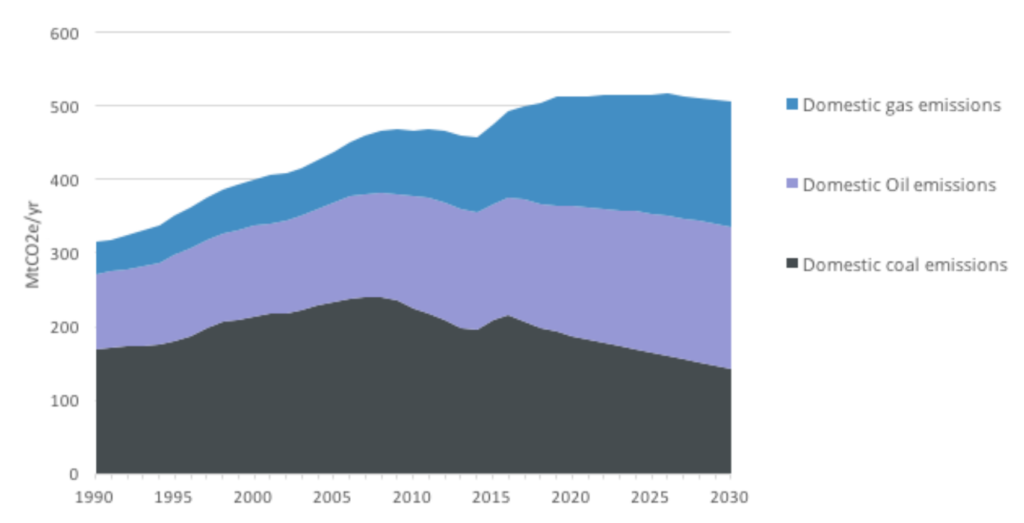
“This report confirms Australia is on track to become one of the world’s worst contributors to climate damage,” said the Australian Conservation Foundation’s Climate Change & Clean Energy program manager, Gavan McFadzean.
“Burning coal and gas is the number one cause of the climate crisis and Australia is now the number one exporter of both, with quantities projected to increase dramatically in coming years.
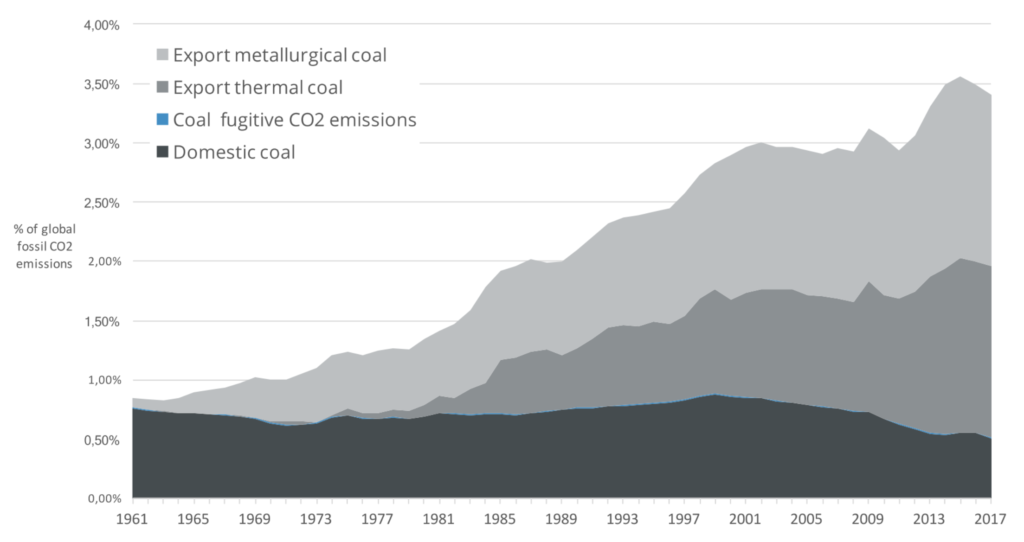
“When we add Australia’s exported emissions to our domestic emissions, Australia rockets to equal fifth on the list of major global climate polluters, alongside Russia and behind only India, the European Union, the USA and China.
“With planned coal and gas expansions, Australia could account for up to 17 per cent of global emissions by 2030, with Australian coal responsible for 12 per cent of global emissions by then.
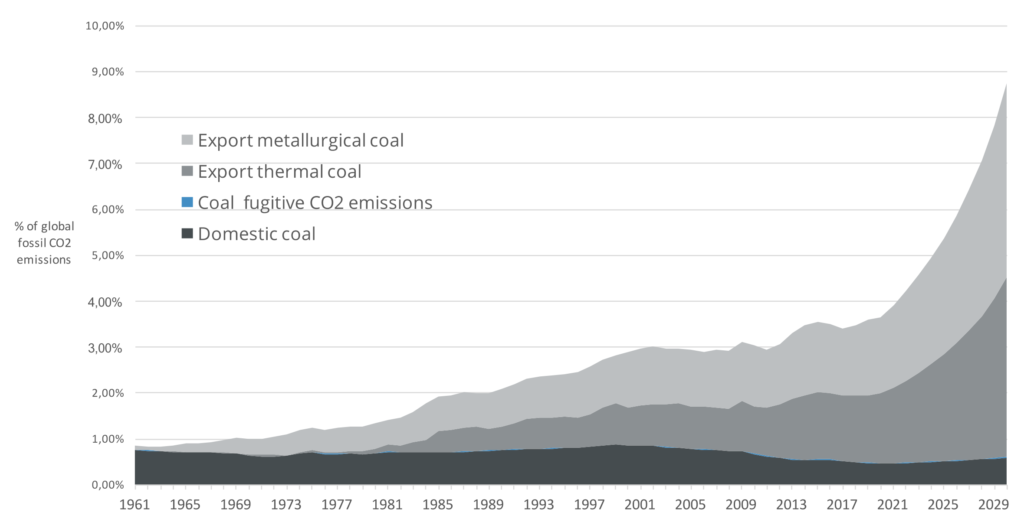
“If Adani’s mine and all the other coal mines proposed for the region reach full production by 2030, the Galilee Basin on its own could account for up to 5.45 per cent of global climate pollution in 2030.
“Liquified natural gas is also a large and growing pollution problem, with Australia on track to become the world’s biggest LNG exporter, producing around a fifth of the world’s LNG.
“Based on government and industry projections, Australia’s domestic and exported gas emissions could account for up to 3.4 per cent of global climate pollution by 2030.
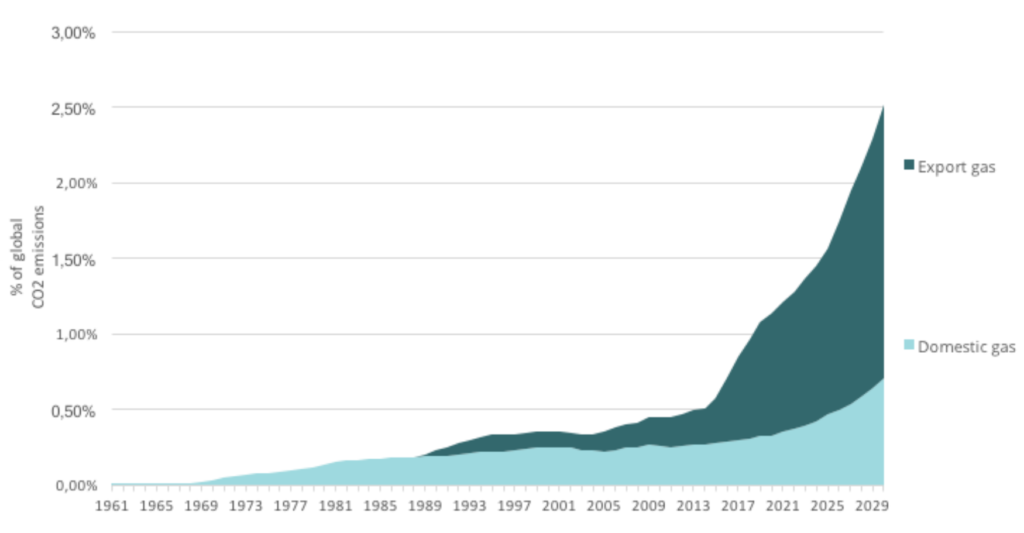
“Australia’s planned fossil fuel expansions contradict global efforts to address climate change and are completely inconsistent with the global energy transition that is needed to meet the critical Paris Agreement goals of keeping global warming under a 2°C threshold and pursuing efforts to avoid passing a 1.5°C threshold.
“Instead of encouraging new fossil fuel projects, a responsible Federal Government would recognise that most of Australia’s fossil fuel reserves must stay in the ground and would facilitate the necessary rapid transition to clean, renewable energy, while working actively to support communities that will be affected by this transition.”
Read Climate Analytics’ report, Evaluating the significance of Australia’s global fossil fuel carbon footprint
Contact
- Tom Arup, 0402 482 910
- Josh Meadows, 0439 342 992
Australia on track to become one of the world’s major climate polluters

